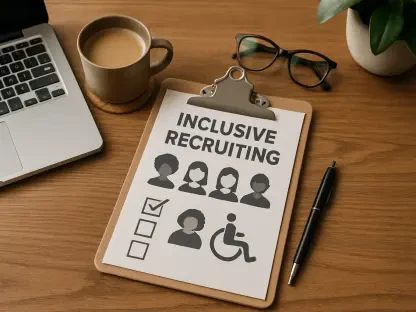I’m thrilled to sit down with Sofia Khaira, a renowned specialist in diversity, equity, and inclusion, who has dedicated her career to transforming workplace cultures. With a deep focus on talent management and fostering equitable environments, Sofia brings invaluable insight into complex issues like Family and Medical Leave Act (FMLA) protections and gender identity discrimination. Today, we’ll explore the nuances of a recent case involving a former Marriott employee in North Carolina who alleged retaliation for taking FMLA leave for gender-affirming surgeries. Our conversation will touch on the legal protections for employees, the challenges of navigating workplace discrimination, and the evolving understanding of how laws apply to gender-affirming care.
Can you explain the core purpose of the Family and Medical Leave Act and how it’s meant to protect employees in situations like the one described in this case?
Absolutely. The FMLA was enacted to provide eligible employees with up to 12 weeks of unpaid, job-protected leave per year for specific family and medical reasons, including serious health conditions that require ongoing treatment or recovery. In the context of this case, where an employee sought leave for gender-affirming surgeries, the law is designed to ensure they can take time off without fear of losing their job or facing retaliation. It’s about balancing personal health needs with workplace stability, and it should cover situations where medical documentation supports the necessity of the leave, as was provided here.
What are some common misunderstandings about FMLA coverage, especially when it comes to gender-affirming care?
One big misunderstanding is that FMLA only applies to more “traditional” medical issues, like childbirth or chronic illnesses. But the law is broader than that—it includes any serious health condition that requires inpatient care or continuing treatment, which can absolutely encompass gender-affirming surgeries. There’s also a lack of awareness that even if a condition isn’t widely understood or accepted by everyone, as long as it meets the criteria under the law, it’s protected. Education is key, because many employers and employees aren’t fully informed about how these protections extend to evolving medical needs like gender-affirming care.
How do you see retaliation manifesting in workplaces when employees take FMLA leave for reasons that might be stigmatized, such as gender-affirming surgeries?
Retaliation can take many forms, and in cases involving stigmatized reasons for leave, it often appears as subtle or indirect actions that create a hostile environment. For instance, in this case, the employee was asked to perform tasks against medical restrictions after their first leave, like lifting heavy objects. That’s a clear red flag. Other times, it might be delaying approvals for leave, as allegedly happened here, or suddenly eliminating a position right after a leave request, which raises questions about the timing and intent. These actions can send a message that taking leave for certain reasons will come with consequences, which is exactly what FMLA is meant to prevent.
What challenges do employees face when they suspect retaliation or discrimination after taking FMLA leave, and how can they navigate those challenges?
The biggest challenge is often proving that the adverse action—like a job elimination—was directly tied to taking FMLA leave or to a protected characteristic like gender identity. It’s not always overt; employers might claim a “restructuring” or other business reasons, as in this case where only the employee’s role was cut despite a broader claim of eliminating positions. Navigating this requires documenting everything—leave requests, medical restrictions, communications with management, and any changes in treatment or workload. Seeking legal advice early can also help, as can connecting with advocacy groups that specialize in workplace rights and gender identity issues.
How do federal laws like Title VII and the Americans with Disabilities Act intersect with FMLA in protecting employees seeking gender-affirming care?
These laws provide overlapping but distinct protections. Title VII of the Civil Rights Act prohibits discrimination based on sex, which courts have increasingly interpreted to include gender identity. So, if an employee faces adverse treatment due to their gender identity—like being singled out after requesting leave for gender-affirming care—that could violate Title VII. The ADA, on the other hand, protects against discrimination based on disability, and while not all gender-affirming care qualifies as a disability, certain conditions or treatments might. FMLA adds the layer of protecting the right to take leave itself. Together, these laws create a framework to challenge both the retaliation for taking leave and any discriminatory motives tied to gender identity.
What role do you think workplace culture plays in either preventing or perpetuating issues like the ones alleged in this lawsuit?
Workplace culture is everything. A culture that prioritizes inclusion and educates staff about legal protections like FMLA can prevent these issues by fostering understanding and reducing stigma around gender-affirming care. If leadership sets a tone of respect and compliance with the law, employees feel safer requesting leave or accommodations. Conversely, a culture that lacks training or harbors bias can perpetuate problems—whether through ignorance or intentional discrimination. In this case, actions like pushing back on medically necessary leave dates or disregarding recovery restrictions suggest a culture that wasn’t supportive, which can amplify feelings of discrimination and retaliation.
What steps can employers take to ensure they’re complying with FMLA and supporting employees who need leave for gender-affirming care?
First, employers need to train HR and management on FMLA eligibility and the scope of serious health conditions, including gender-affirming care. Clear policies should outline the process for requesting leave and ensure there’s no pushback or unnecessary delays. Second, they must enforce a strict no-retaliation stance—meaning no adverse actions like job cuts or unreasonable demands during recovery. Finally, fostering an inclusive environment through diversity training can help reduce bias and make employees feel supported. It’s about combining legal compliance with genuine cultural change to prevent situations like the one alleged here.
Looking ahead, what is your forecast for how FMLA protections and workplace policies around gender-affirming care will evolve in the coming years?
I believe we’re on a trajectory toward broader recognition and protection under FMLA for gender-affirming care, as more case law and advocacy clarify its applicability. We’re already seeing increased discussion and guidance from legal groups, which is pushing employers to update policies and training. However, the pace of change will depend on political and social climates—some regions may resist while others lead the way. I expect more lawsuits like this one to shape precedents, and I hope we’ll see federal agencies issue clearer guidelines to standardize protections. Ultimately, the goal is for workplaces to adapt proactively, ensuring all employees can access their rights without fear of retaliation or discrimination.









